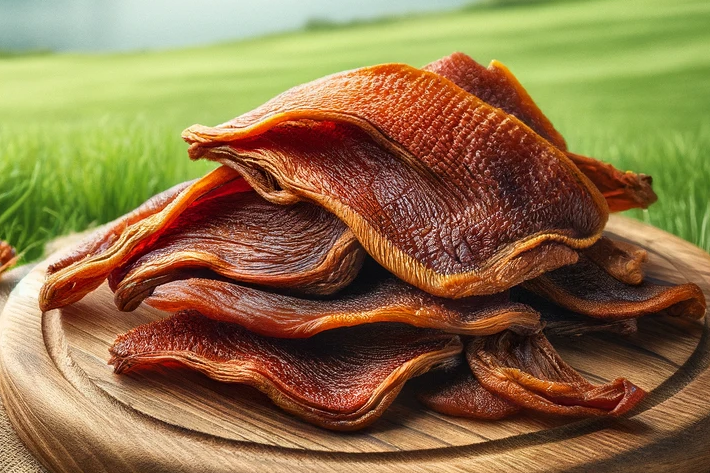Chicken skin

Chicken skin is the thin layer of fat and connective tissue that lies under the skin of chickens. It is often removed and discarded with the skin, but some people like to eat it crispy fried or deep-fried. But what about dogs? Can your four-legged friend eat chicken skin or is it harmful to them? In this article, you'll find out everything you need to know about chicken skin for dogs.
What is chicken skin?
Chicken skin consists mainly of fat, which makes up between 10 and 40 percent of the total weight of the skin. The fat contains various fatty acids, which are responsible for the taste and texture of the skin. Chicken skin also contains protein, water, minerals and vitamins, especially vitamins A, B and E.
What are the benefits of chicken skin for dogs?
Chicken skin can have several benefits for dogs if it is fed in moderation. Firstly, it can be used as a treat or reward as it has an intense flavor and is readily accepted by most dogs. On the other hand, it can promote skin and coat health as it contains essential fatty acids that can reduce inflammation and support cell regeneration. It can also stimulate digestion as it provides fiber that can improve bowel function.
What are the disadvantages of chicken skin for dogs?
However, chicken skin also has some disadvantages for dogs that should not be ignored. Firstly, it can lead to overweight and obesity as it is very high in calories and increases the risk of cardiovascular disease, diabetes and joint problems. Secondly, it can lead to gastrointestinal problems if it is raw or spoiled or if the dog has an intolerance or allergy to chicken meat. Symptoms may include diarrhea, vomiting, flatulence or abdominal pain. It can also lead to an increased cholesterol level, which can also be harmful to the dog's health.
How much chicken skin can a dog eat?
The amount of chicken skin a dog is allowed to eat depends on various factors, such as the dog's age, weight, state of health and activity level. In general, however, chicken skin should only be fed occasionally and in small quantities, as it does not replace a complete diet and can lead to health problems. A rule of thumb is that chicken skin should not make up more than 10 percent of a dog's daily calorie intake. This means, for example, that a dog weighing 10 kilograms should not eat more than 20 grams of chicken skin per day.
How should chicken skin be prepared?
Chicken skin should always be cooked well before it is given to the dog. This kills any bacteria and makes the skin easier to digest. Excess fat should also be removed to reduce the calorie content. The skin can either be baked in the oven or fried in a pan until it is crispy. No salt or other spices should be used, as these can be harmful to the dog. The finished chicken skin should be cut into small pieces and allowed to cool before offering it to the dog.
Chicken skin is a controversial ingredient for dogs that has both advantages and disadvantages. It can serve as a tasty treat or as a supplement to food, but it can also lead to obesity, gastrointestinal problems or other health risks. Therefore, chicken skin should only be fed in moderation and well cooked and should not be the dog's main food source.
If you notice any signs of hypersensitivity or poisoning in your dog, you should see your vet immediately. We are not a substitute for a vet, but we try to be as accurate as possible. Every dog reacts differently and we recommend you get a second opinion or consult your vet if in doubt.
Stay healthy and take good care of your four-legged friend!😊
Similar to Chicken skin
Goosebumps have several positive effects on your dog's health: It supports the function of the skin and coat by providing them with moisture and nutrients. The amino acids tyrosine and...
Poultry skin is the thin layer of fat and connective tissue that covers the meat of chickens, turkeys, ducks or geese. It is often crispy and aromatic and is eaten by many people. But is it also...
Turkey skin is the skin of the turkey, which is often a by-product of slaughtering. It is sometimes sold as a snack for dogs or used as an ingredient in dog food. Turkey skin contains a lot of fat...
Duck skin is rich in protein, which is important for muscle building and cell regeneration. Protein is also an important building block for your dog's skin, hair, nails and organs.Duck skin also...



